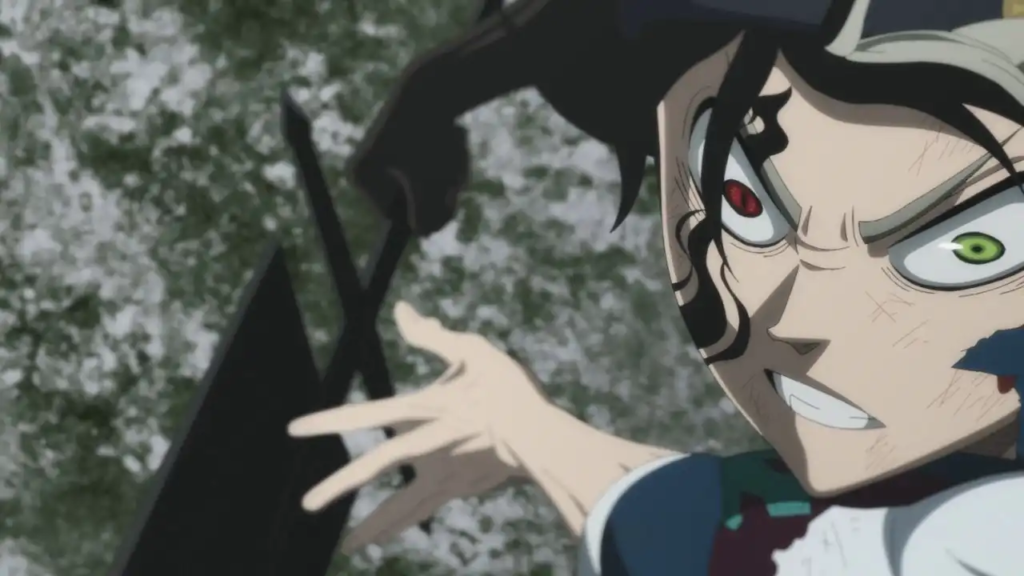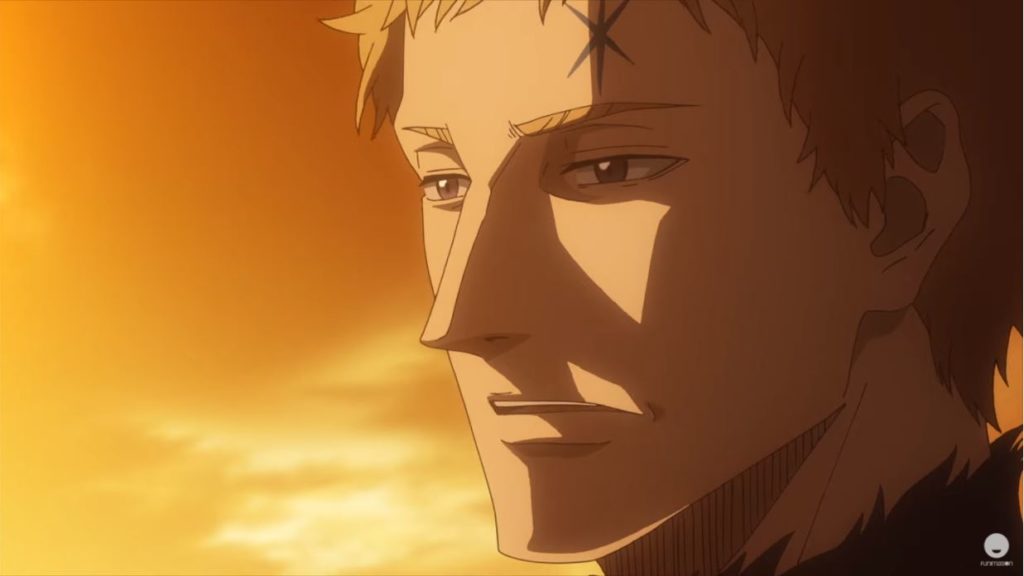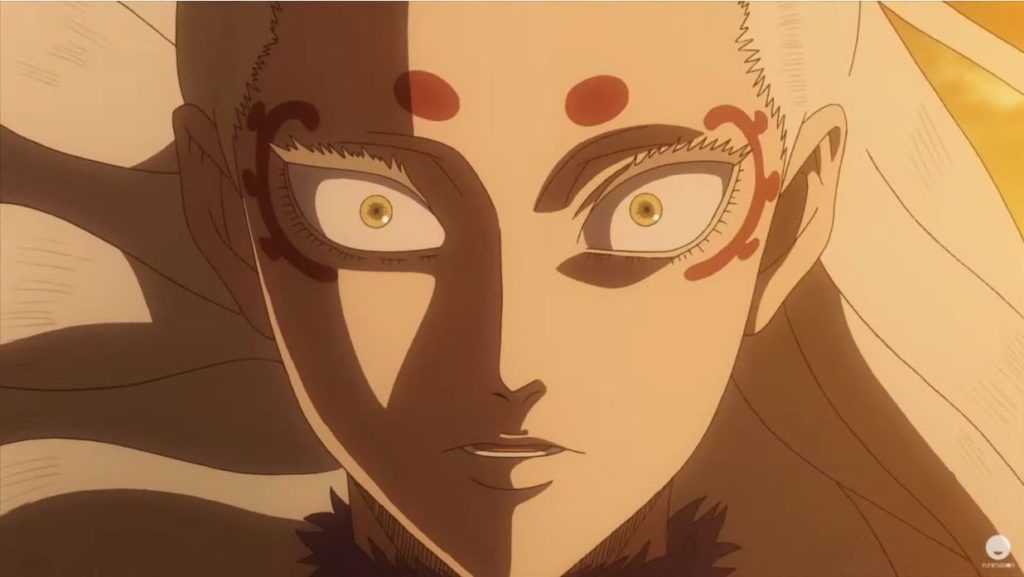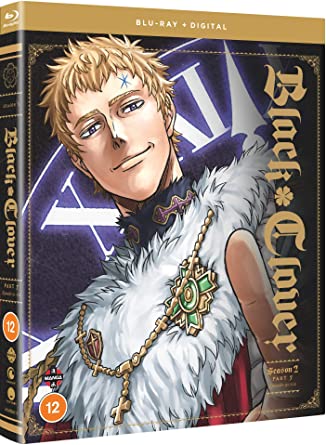Black Clover Season 2 Part 5 Review
Black Clover is a series that did not receive the warmest welcome upon its initial release. The series came in for a great deal of criticism as it was first airing and much of it was well enough founded, if not a tad exaggerated at times. Here we are now, concluding its second season with the release of Part 5 and passing its milestone 100th episode. The series has developed a great deal since its debut and has confidently found its footing among its shonen peers.

Black Clover has been gradually improving over time and this release is the culmination of that development so far. We’ve travelled from the story’s humble beginnings in Hage Village, with Asta and Yuno receiving their grimoires and vowing to become Magic Knights (and, eventually, Wizard King of the Clover Kingdom) to them now joining the elite Royal Knights of the Kingdom and facing the land’s greatest enemy. Part 5 takes the table setting of previous episodes and finally gets to the meat and potatoes of the core plot against the Clover Kingdom, that has been looming since the earliest episodes.
With this in mind, the scale of these plans encompass not only the entirety of the Clover Kingdom but mankind itself. A great job is done in showing this large scope by jumping between the perspectives of the many different parties involved, so that the viewer can see their fallout across the land. Scale is a term I will regularly use in describing this release as it is a feature across not only the events of these episodes, but their production too. Whether it be in terms of the perspectives and plots it juggles, or even its themes that are particularly pertinent in the real world right now.

Black Clover has a large, eclectic, cast of characters and this plot displays the largest array of these characters to this point due to the far-reaching plans of the Eye of the Midnight Sun organisation. Jumping around the many parties involved could have easily caused a kind of narrative whiplash but through the well controlled plot and pacing it never feels disjointed and it makes the events all the more intriguing as we anxiously wait to see how this rather unique event unfolds. We are only half way through this arc (going by the manga) so there is still plenty more to still look forward to.
Black Clover is aired as an ongoing series rather than a seasonal release, and as a result, the end of what they refer to as a season doesn’t necessarily conclude anything narratively. While the events of this release are exciting, understand that this takes place mid-arc and ends with a cliffhanger amidst the larger plot. The last episode on the set actually has a great deal of reiterated flashback material. It has some great emotional stakes involved but it still serves partly as a clip show episode which is a bit of an odd one to end the set on. Particularly when the previous episodes were among the strongest to date.

It was fairly common through the first series and early into the second for Black Clover to be criticised for its inconsistent animation. The series, like many of Studio Pierrot’s previous shonen, is produced ongoing with a schedule much less forgiving than those that adopt the seasonal model that is becoming more commonly used. It’s great to see that this seems to mostly be behind us now, as the peaks and troughs of the series animation quality have given way to a much more consistent standard of animation. Much of this praise is deservedly pointed at series director Tatsuya Yoshihara who has managed to guide Black Clover to a really good place after addressing the initial issues many had with the series, however, the talent of the animators involved is becoming more and more apparent.
I have praised several episodes of the series for their animation quality. Episodes such as the incredibly experimental Episode 63 with Asta vs Ladros, or the explosive scale of Yuno vs Rill in Episode 84. Being a shonen, it is to be expected that the best animation will be demonstrated in the more significant battles taking place in the show’s run. This set offers a couple of great examples where the animators have really flexed their talent. Episode 92 has the long-awaited confrontation between the Wizard King and the leader of the Eye of the Midnight Sun, and the milestone Episode 100 also has possibly the most intense battle of the series so far to cap off a landmark episode. The animation in these episodes in particular is spectacular and another reminder of the rich talent behind the scenes. With several talented animators such as Nami Hayashi, Ron Deseo, Kai, Isuta Meister, HAHI to name a few, creating a number of cuts that will have sakuga fans drooling. Not only is it excellent in terms of quality but also in terms of the sheer scale. The perspectives taken of the battles and the explosive power displayed is huge to the point of it completely dwarfing the human scale. Key animation by animators such as Gem has been a particular highlight in terms of his ability to really zoom out and demonstrate the sheer mass and damage caused by these huge elemental attacks. The studio should be very proud of how far they have managed to progress the series, not just in these particular stand-out episodes, but the series as a whole as it now seems to be finding a comfortable structure that this quality is now appearing with much more regularity.

I also wish to direct some praise towards the musical composition of the series by Minako Seki. These episodes in particular have produced some stand-out moments that the music has only added to the grandeur of the events unfolding. Some of the greater power struggles and battles have been as good as they are, not just for the animation involved, but with how well the music has worked with them.
Due to the offset changing of opening and closing themes in the later half of Season 2, the closing theme remains as “Against All Gods” by M-Flo, which I commented on in my review of the last release. From Episode 92 onwards we are given a new opening theme with “Sky & Blue” by Girlfriend. This new opening is really catchy and upbeat, accompanied by some great cuts of action animation to boot, however, with how dark the plot is at this point it tonally feels a little odd to have this contrast at the beginning. Though, it’s still a great song in its own right.
This set contains a larger number of episodes than many of the previous releases with twelve episodes (#91-102), along with a number of extras including: Inside the Episode (Episodes 93, 97, 99 and 102), commentaries for Episodes 92, 98 and a video commentary for Episode 94. Clover Clips Special Edition and another set of textless opening and closing songs. This set also continues to have the inclusion of a Funimation digital copy, which is always welcome when allowing more flexibility in how you watch the series. Though, I will note that it appears we do not get the art book that was included with the US release in this set.

Black Clover may always have its detractors due to its rough start, but much of that will also come with being another ongoing shonen and falling into the typical traps of the genre. But many of its issues have been addressed and it has improved leaps and bonds into such an enjoyable series to watch at this point. I have frequently said in reviews of the previous parts that there was a great deal of potential for the series that was not being realised, but through steady improvement Black Clover has managed to state its case for being a solid shonen series in its own right. Tatsuya Yoshihara and his team at Studio Pierrot have done an excellent job in raising the overall standard of this series, a feat that I’m sure many long running fans and defenders of the show greatly appreciate. It’s not shonen that is breaking new ground but the conclusion to Black Clover’s second season is incredibly entertaining and setting a great benchmark for the coming season and beyond.


